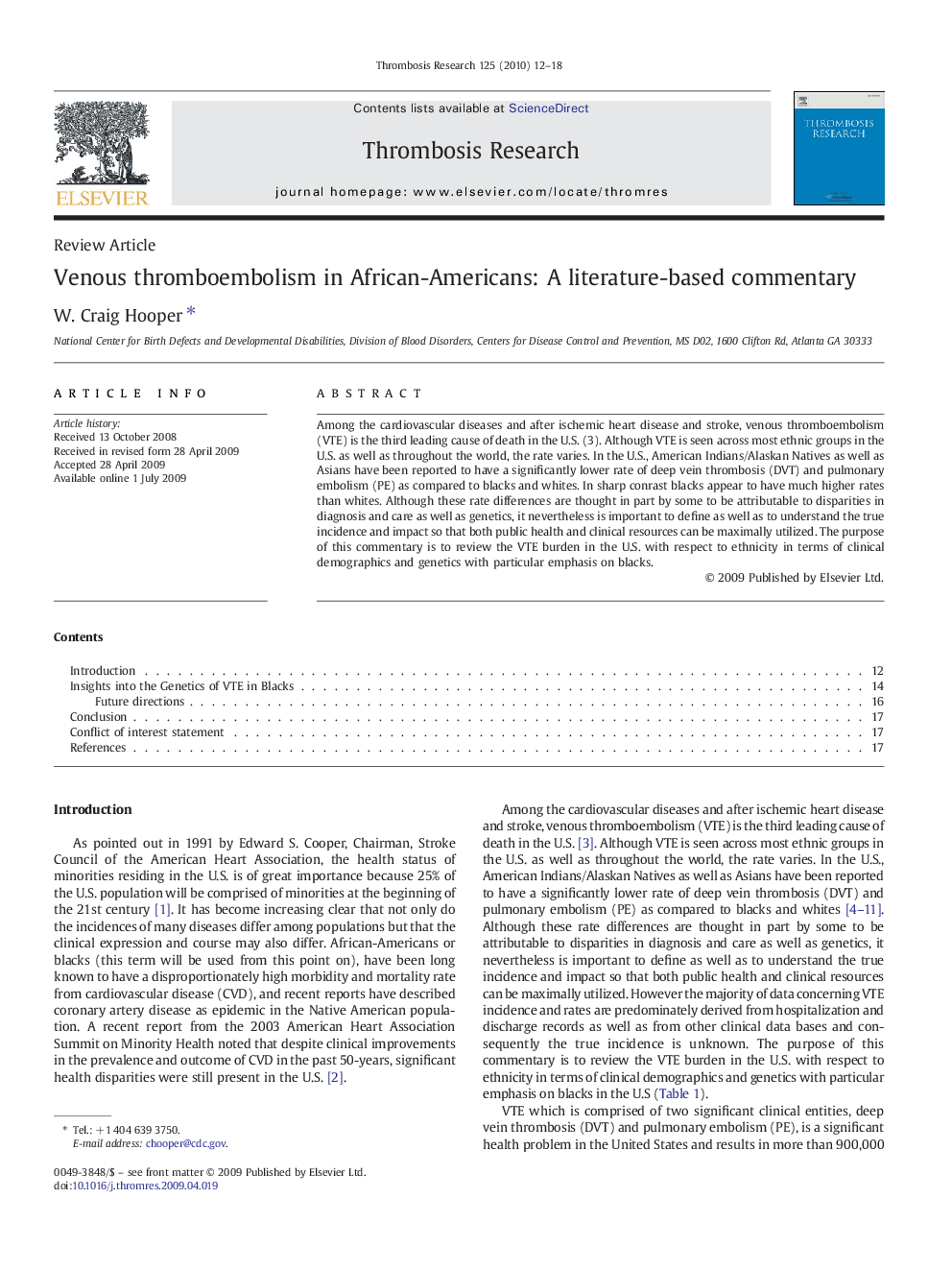| Article ID | Journal | Published Year | Pages | File Type |
|---|---|---|---|---|
| 3028095 | Thrombosis Research | 2010 | 7 Pages |
Among the cardiovascular diseases and after ischemic heart disease and stroke, venous thromboembolism (VTE) is the third leading cause of death in the U.S. (3). Although VTE is seen across most ethnic groups in the U.S. as well as throughout the world, the rate varies. In the U.S., American Indians/Alaskan Natives as well as Asians have been reported to have a significantly lower rate of deep vein thrombosis (DVT) and pulmonary embolism (PE) as compared to blacks and whites. In sharp conrast blacks appear to have much higher rates than whites. Although these rate differences are thought in part by some to be attributable to disparities in diagnosis and care as well as genetics, it nevertheless is important to define as well as to understand the true incidence and impact so that both public health and clinical resources can be maximally utilized. The purpose of this commentary is to review the VTE burden in the U.S. with respect to ethnicity in terms of clinical demographics and genetics with particular emphasis on blacks.
